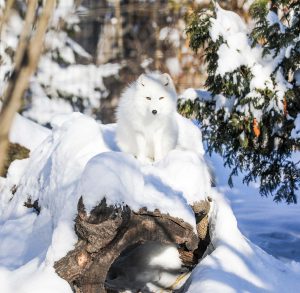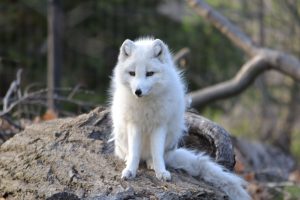 Characteristics
Characteristics
The Arctic fox is dark gray to bluish brown in the summer, but during the winter, its fur is bright white. It has a long, bushy tail, a short nose, and small, curled-back ears. Each of its features, including the stubby legs and thick fur, helps the Arctic fox survive harsh temperatures.
Behavior
The Arctic fox hunts in small bands (no more than three), and they do not hibernate. To store food for the winter, they bury leftovers or conceal them under stones. To locate their hidden food stashes, the Arctic fox relies on its highly developed sense of smell. Somewhat unwary, they have been known to enter camps in search of food or just out of curiosity.
Did You Know?
- They also take advantage of polar bears by following them and cleaning up after they feed on a kill.
- They have also been found within 300 miles of the North Pole, and have withstood temperatures of -100F!
 Reproduction
Reproduction
Monogamous pairs mate in April-July, with a first litter in April-June and a second in July-Aug. Gestation is 49-57 days and litter size varies depending on food. An average litter is 5-8 offspring. Young are weaned at 2-4 weeks, emerge from the den and learn from their both parents.
Our Animals
We have two Arctic foxes at the zoo – a male named Elvis and a female named Sparkle Pink.




